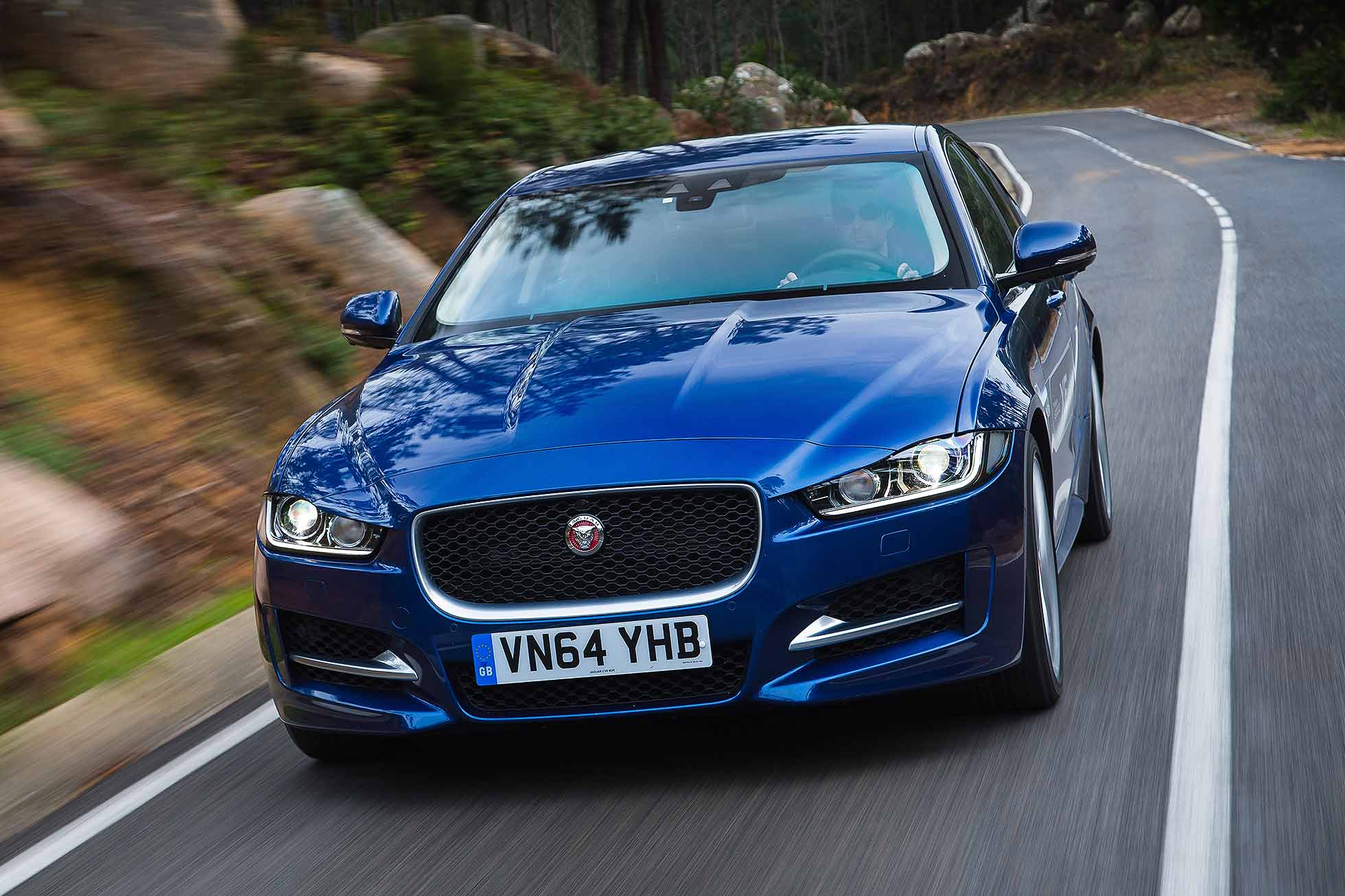
We’ve waited long enough for the new Jaguar XE, so we’re not going to keep you in suspense any longer: they’ve nailed it. This is a thoroughly competitive modern premium compact saloon whose talents are broad-based and considerable.
Yes, that’s right. The Jaguar XE can mix with the best of ‘em.
The back story: this is the much-anticipated ‘baby Jag’ which debuts an all-new aluminium-intensive architecture, is built in an all-new factory, uses an all-new engine that itself is built in an all-new plant. Cars are rarely as ‘all-new’ as this and to say a lot is riding on it is a magnificent understatement.
It’s the most important car Jaguar will launch in a generation.
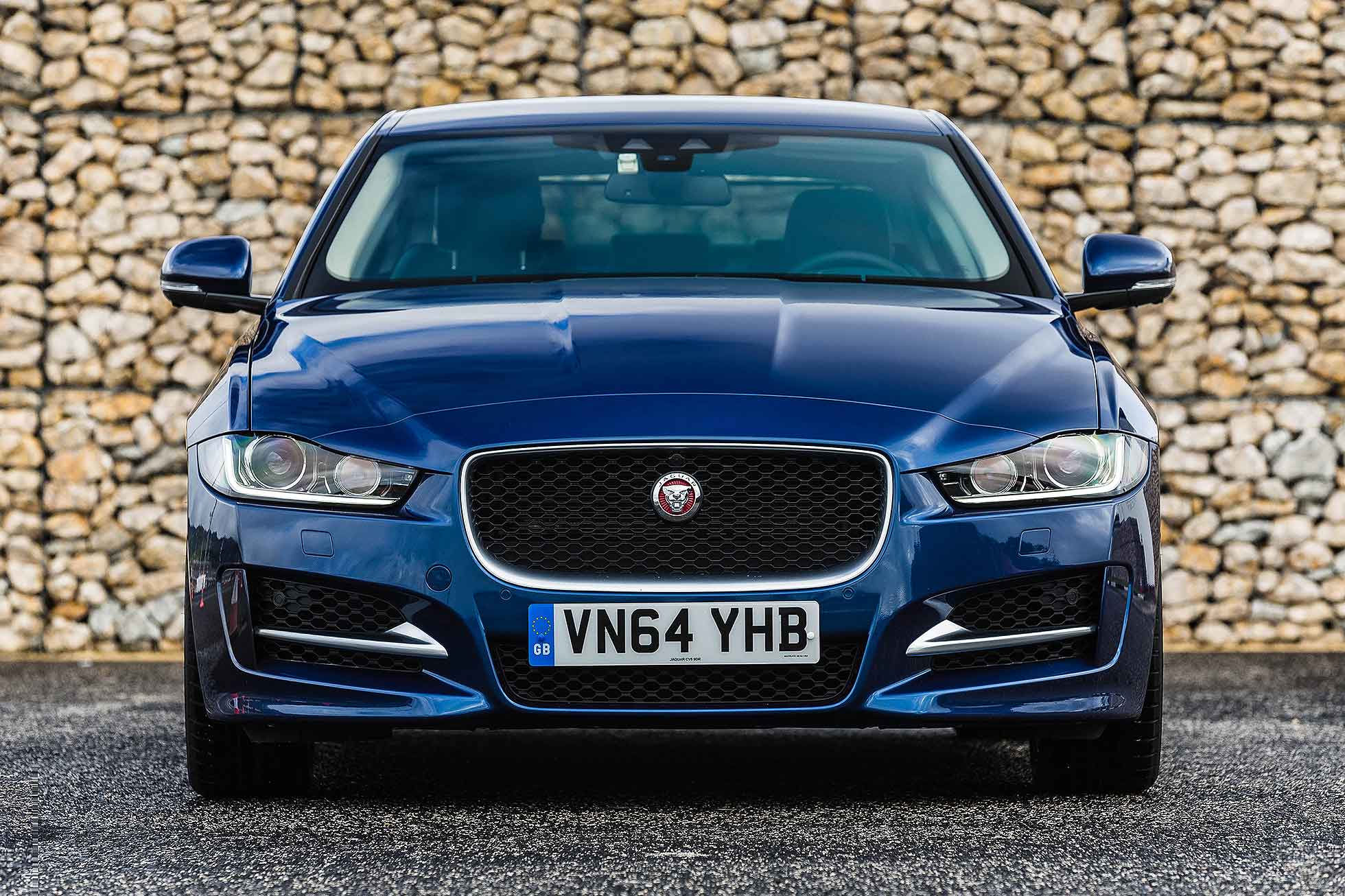
This is a rare first drive opportunity of a final proving prototype – that’s how keen Jaguar is to show us its new compact executive car. The cars weren’t quite showroom-ready, but were as near as could be: crucially, the way they look and drive will barely be changing.
So what do we have to look forward to when deliveries start in late May? A car that BMW, Mercedes-Benz and Audi will face an immediate threat from, that’s what…
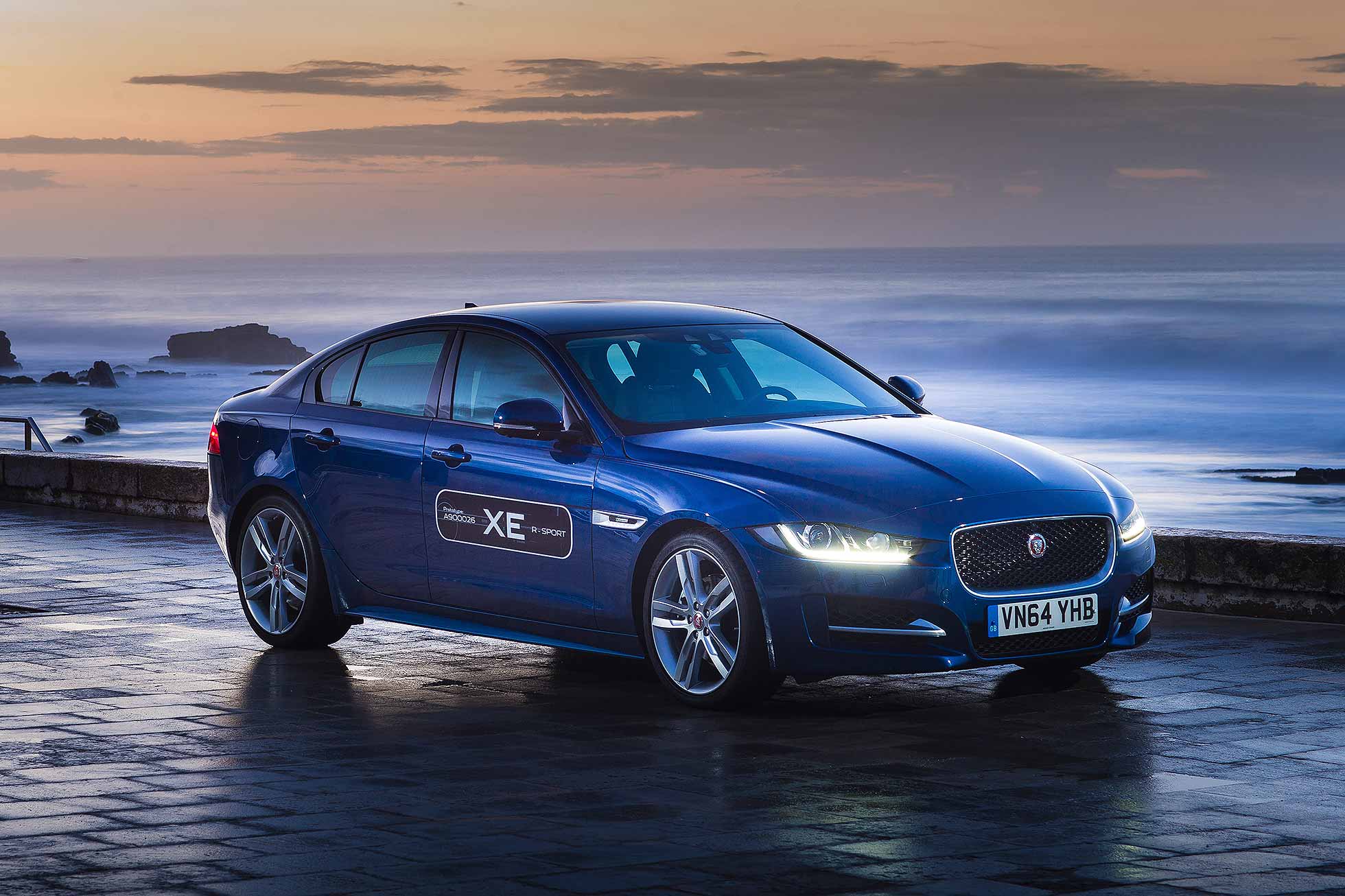
Jaguar XE: styling
There’s been plenty of comment about the XE’s styling since it was first revealed in September 2014. Why is it not more radical? Because this is, for all its bravado, a conservative sector. And Jaguar has sold so few cars to date, argues the firm, many in the world still don’t actually know what a modern Jaguar looks like. It was thus never going to take a risk.
In the metal (75% aluminium – basically, everything but the doors, boot lid and rear passenger floor pan), it looks more interesting than images suggest. It is well proportioned, with a wide stance, strong roofline, long wheelbase and stubby rear. The front seems just like the XF at first but experience reveal this to be sharper, bolder, more taut.
Favourite aspects include the rear three-quarter, where the deep-draw wrap-around body sides reveal their impressive sculpting. Head-on front is smart when viewed on the road, not least because of the daytime running light pattern (giving it instant recognition on the move). The stubby rear’s appeal grows with familiarity and the front wing vents are lovely too. The slightly plain sides? More acquaintance required: those ‘prototype’ stickers didn’t help.
Oh, and why isn’t it entirely made from aluminium? Mainly because of weight distribution, says Jaguar: all the steel bits are at the back, to shift the balance rearwards and hit the perfect 50:50 blend BMW achieves with the 3 Series. Again, it’s done this with the driver in mind…

Jaguar XE: driving
Jaguar insists this is the driver’s car in the segment – yes, outpointing even the BMW 3 Series, a car that’s built its reputation on being the ultimate driving machine. Big, big claim. But while the 3 Series’ overtly dynamic nature may still be preferable for some, other may just side with Jaguar’s broad-based driver-pleasing talents. That’s how good the XE is.
First thing to strike you is the fantastic, world-class ride quality. At all speeds, it is excellent. Low-speed absorbtion is cushioned and composed, taking the edge off scars with real aplomb. At higher speeds, even the most aggressive surfaces are filtered away – and the quietness of the ride is as impressive as the comfort. It neither sounds nor feels ‘busy’.
But it’s not overly soft with it. Even the standard passive suspension of the volume 2.0d 180 R-Sport we drove demonstrated sublime body control, with fluid motions and never a hint of wallow. Jaguar has invested big on suspension, with double wishbones at the front and an integral link rear, and it shows. This is how it’s able to run bigger wheels than rivals yet still keep harshness at bay.
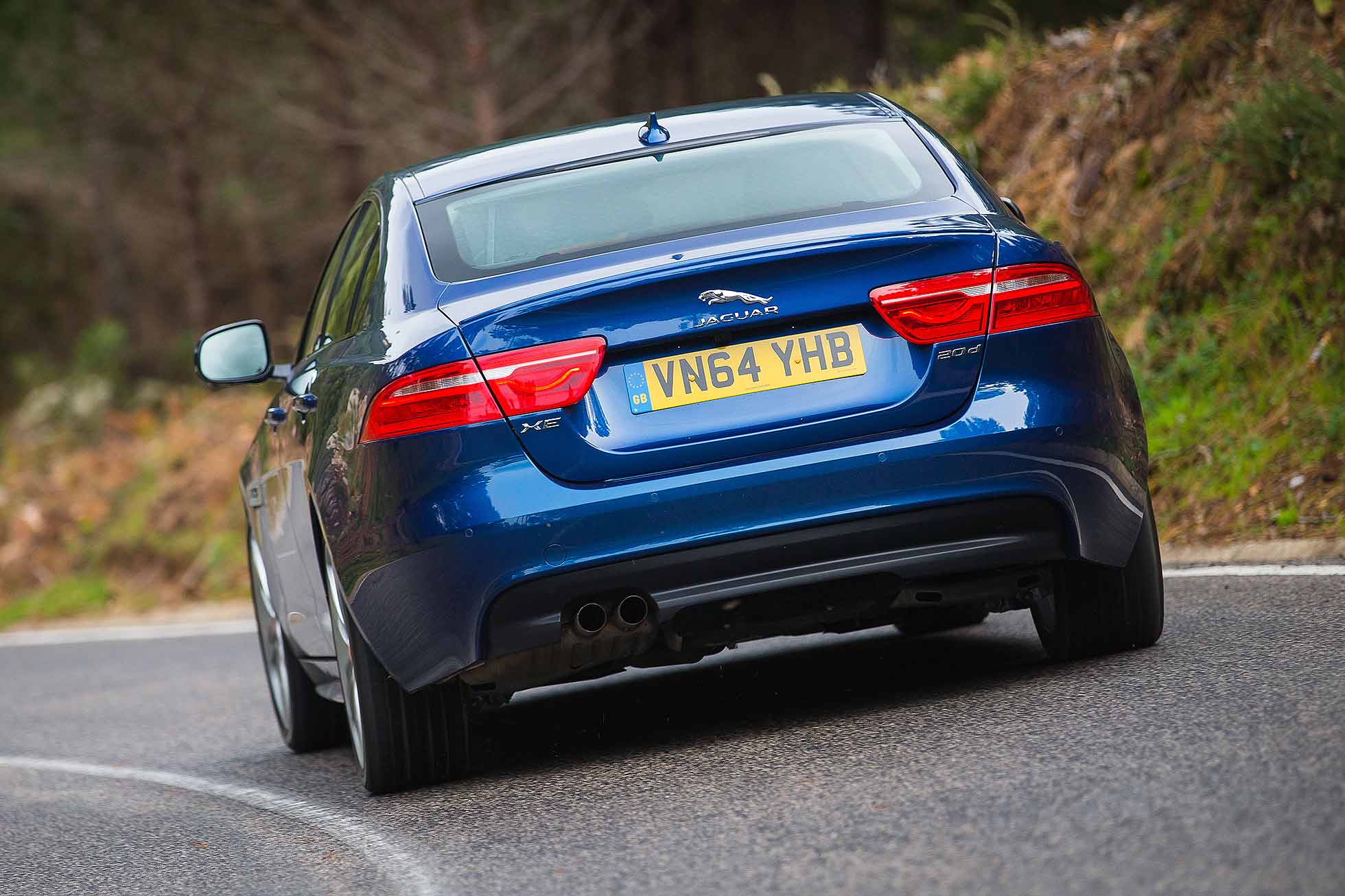
The rear-drive car’s satisfying handling reveals itself more gradually. It’s not as immediately sporting as the 3 Series, doesn’t have its apparent sharp alacrity (although the 3’s stiffer ride may be a factor here). It does have a neat, sharp front end that responds alertly though, through electric power steering that feels just as sensitive and natural as a traditional hydraulic system.
And its reassuring, confident balance does emerge the more you press on. It’s a satisfying car to drive quickly, with an eager nature and real depth of ability when road conditions degenerate. Such excellent body control helps it show poise and the delicacy with which it can be threaded over twisting roads is the product of real breeding. It feels impeccably engineered; you can tell Jaguar’s spent a lot of money on this platform.
Ultimately, it’s not quite as racy-feeling as a 3 Series, but its abilities may be wider ranging when you consider how impressive ride quality and composure are. It’s going to be a fascinating back-to-back between these two: nothing else gets close.
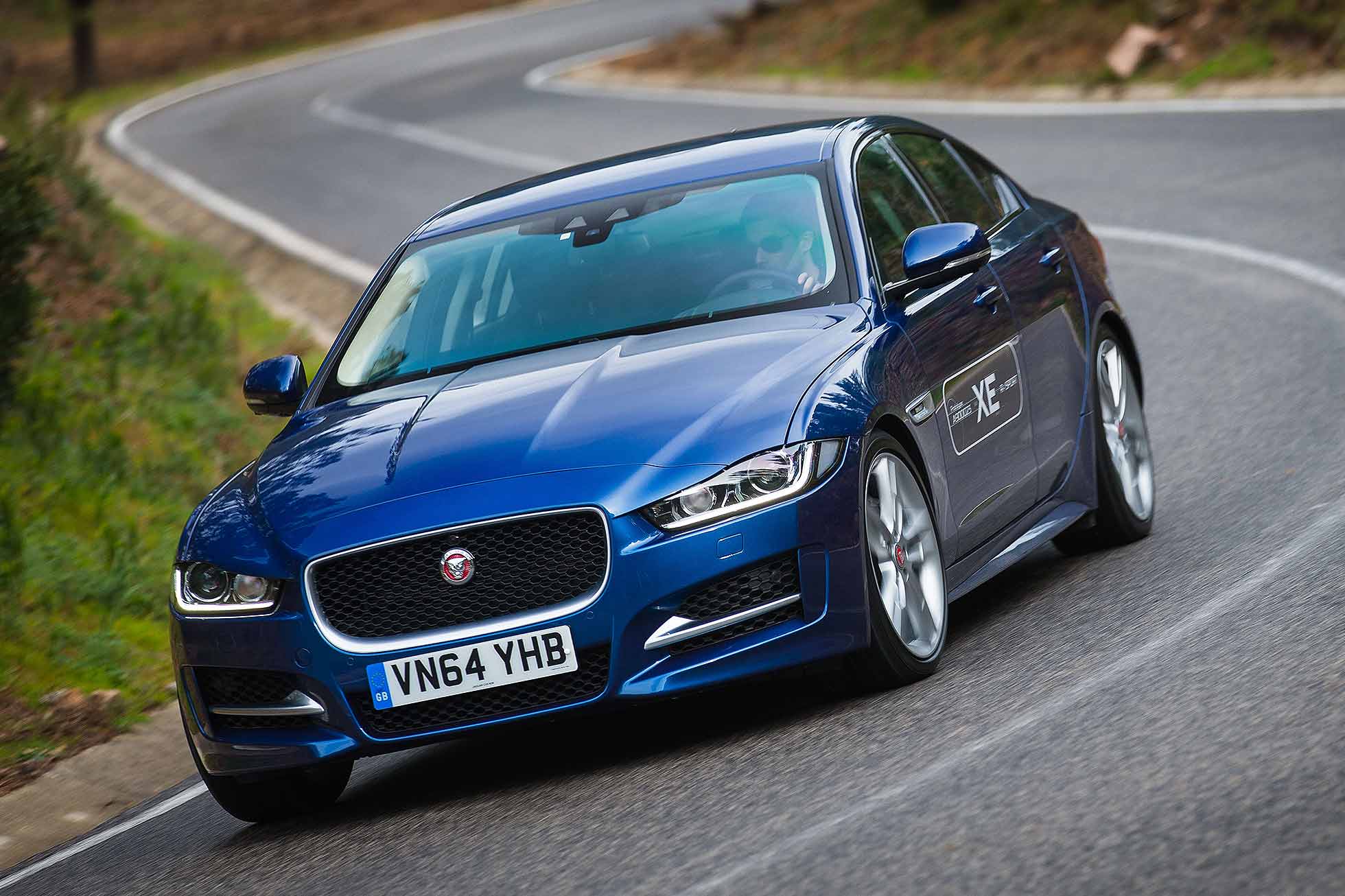
Jaguar XE: engine
Jaguar offers a full engine range from the XE’s launch but, while the familiar Ford-derived 2.0-litre turbo petrol is the £26,995 price leader and the F-Type’s 340hp 3.0-litre supercharged V6 grabs the performance headlines, the critical volume engines will be the diesels. And it’s the 2.0-litre four-cylinder motor that’s most interesting, as it’s Jaguar’s all-new Ingenium unit.
First impressions? From cold, it was a bit noisy at low revs. It was gruffer than we expected, with a slightly gravelly hum. This faded as it warmed but, when pulling away in first gear, it remained a bit prominent. Don’t worry, said Jaguar: these are pre-production cars, and all the engine bay sealing isn’t yet complete. This will be cured in customer’s cars (as will, presumably, the slightly sudden stop-start shutdown).
With this proviso, we concentrated on the rest of it: and it’s very, very impressive. This is an engine that revs eagerly and very smoothly, with a surprisingly sweet nature for a diesel. It’s much quieter on the move and is far more isolated than clattery rival units from Audi and Mercedes-Benz; it’s a real challenger for BMW’s latest 2.0-litre diesel.
0-62mph takes 7.4 seconds in test automatic guise, not significantly faster than the 163hp version (a 320d auto does it in exactly the same time). It’s the 413lb ft of torque that gives it legs once on the move though, with a muscular, effortless response to the accelerator. Turbodiesels are always good here, but the XE feels particularly strong.
It’s punchy when rallied too, with the optional eight-speed automatic gearbox the perfect partner for it. Shifts are, like in BMWs with this gearbox, swift and seamless, with paddles nicked from the F-Type there to take over if you wish (usually, there’s no need).

Jaguar XE: interior
This is the bit that, on first acquaintance, slightly disappoints. The new C-Class’ interior has the instant wow factor, so does the Lexus IS. The XE is interesting, but doesn’t immediately shout premium. It seems a bit plain, a little too mainstream.
It’s a low dash architecture, with a big centre tunnel and low-ish seats to hint at sportiness; the seats are firm and the dished steering wheel is lovely. There’s a scalloped hoop around the top, like in the XJ, and the doors are concave to complement this. Smart metal finish air vents are positioned low and eat into the doors: a neat touch.
At night, it’s beautifully lit with ambient detailing, with the centre console as its centrepiece. There, Jaguar’s new-era InConnect touchscreen resides; at last, modern-look infotainment and sat nav in a Jag. It’s an efficient system, although it is fully touchscreen, unlike rivals who use rotary controllers. You’ll get used to it (the close position of the colourful high-res screen helps).
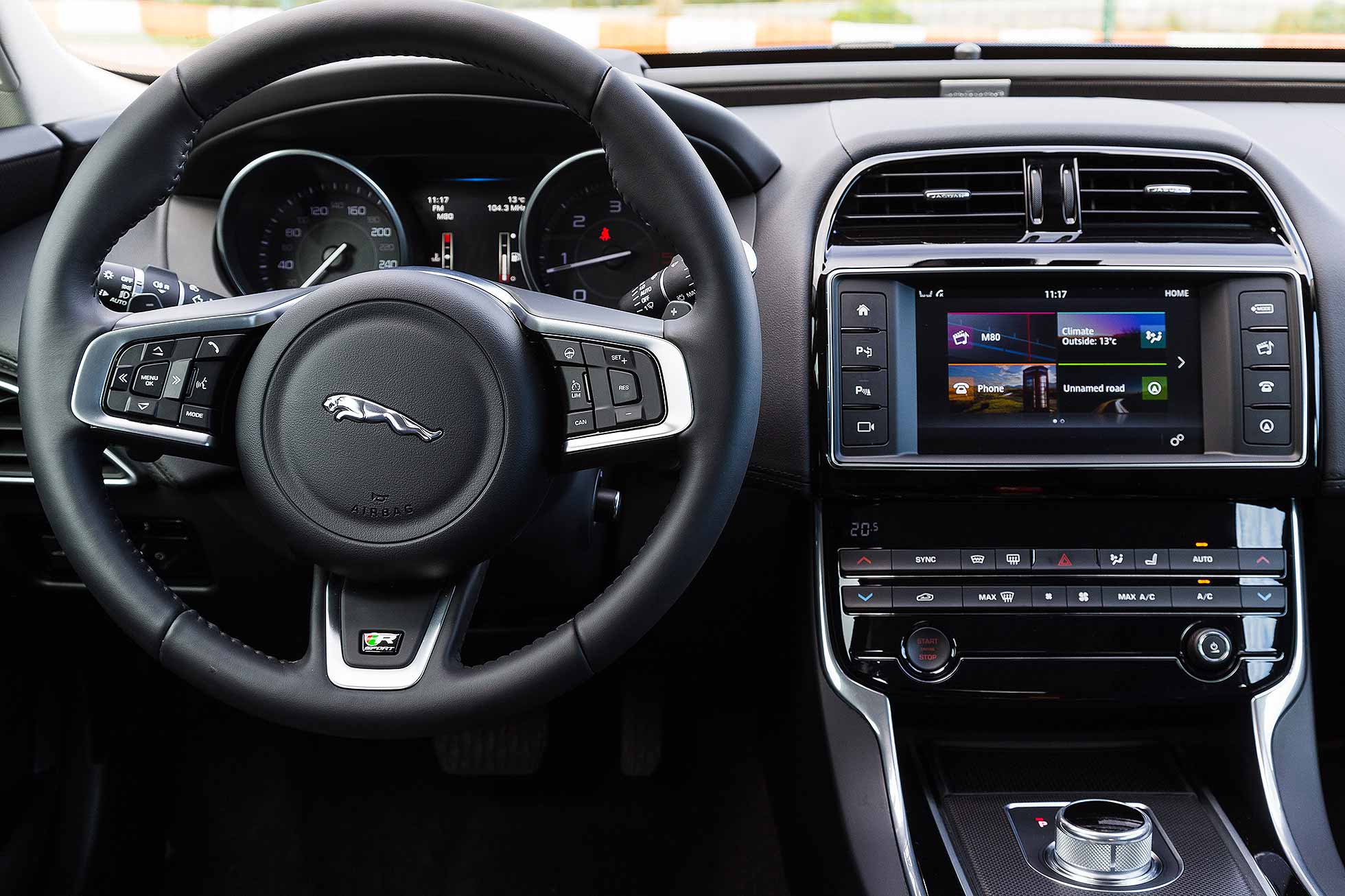
So why the qualified hesitation? Because rivals seem richer, classier. Yes, this was still a pre-production interior, and the final one will have better finishing on most surfaces (even tough materials quality on show here is commendable). But this is unlikely to alter the slightly bland appearance much.
It seems particularly plain around the passenger side, and we’re not sure about the cutout in the leather for the airbag either. Details like the low-res screen between the Range Rover Evoque-derived dials lack the wow factor of the Merc too. We’ll wait to see if the final production cars get that final lift in detail to take them up to the C-Class’ very high standards (at least the 3 Series is within reach and the former Audi A4 benchmark is now embarrassingly dated – although there’s a new one on the way…).
As for space, there’s ample in the front, and the driving position is good (front A-pillars can obstruct due to the steeply raked windscreen, though). In the back, a high rear deck makes it appear very claustrophobic, but there’s more space there than you think. It’s not abundant, but adults can sit behind adults in decent comfort.
The boot is a respectable 455 litres but rivals are bigger. While it’s wide and long, it’s a bit shallow, particularly deeper into the boot itself. The stretched, coupe-esque roofline means the opening isn’t as big as some rivals’ more three-box saloon shapes either. Competitors are also one step ahead of Jaguar for interior stowage space: the door pockets are too small and the open centre console could do with being a bit bigger.
Jaguar XE: ownership
XE prices starts from £26,995 for the petrol turbo we haven’t driven, and £29,775 for the diesel we have; the test 2.0d 180 R-Sport, expected to be a best-seller, is £33,025, or £34,775 in auto guise tested. It currently stretches up to the £44,870 3.0 supercharged V6 S.
R-Sport trim is central in a range that stretches from SE to Prestige, R-Sport, Portfolio and S. All versions offer an automatic option for £1,750 (it’s standard on the V6 S) and Jaguar says, spec for spec, the XE is better equipped than the competition.
Every single version comes with standard sat nav (and 8-inch touchscreen), every version above base SE has leather and the test R-Sport adds heated Taurus leather sports seats, sports suspension, 18-inch alloys, rear spoiler and bi-xenon headlights. Jaguar’s optional head-up display is clearer and higher-contrast than its competitors, and there’s even Jaguar All Surface Progress Control that cleverly uses Land Rover expertise to boost rear-wheel drive traction in wintry weather.
Oh, and with one eye on tax and running costs, it’s greener than rivals: the 2.0d 163 manual boasts free road tax 99g/km CO2 and average economy of 75mpg. All diesels are under 110g/km CO2 and average over 67mpg. Jaguar is also claiming front-running retained values which will further help keep lease and contract hire costs down.
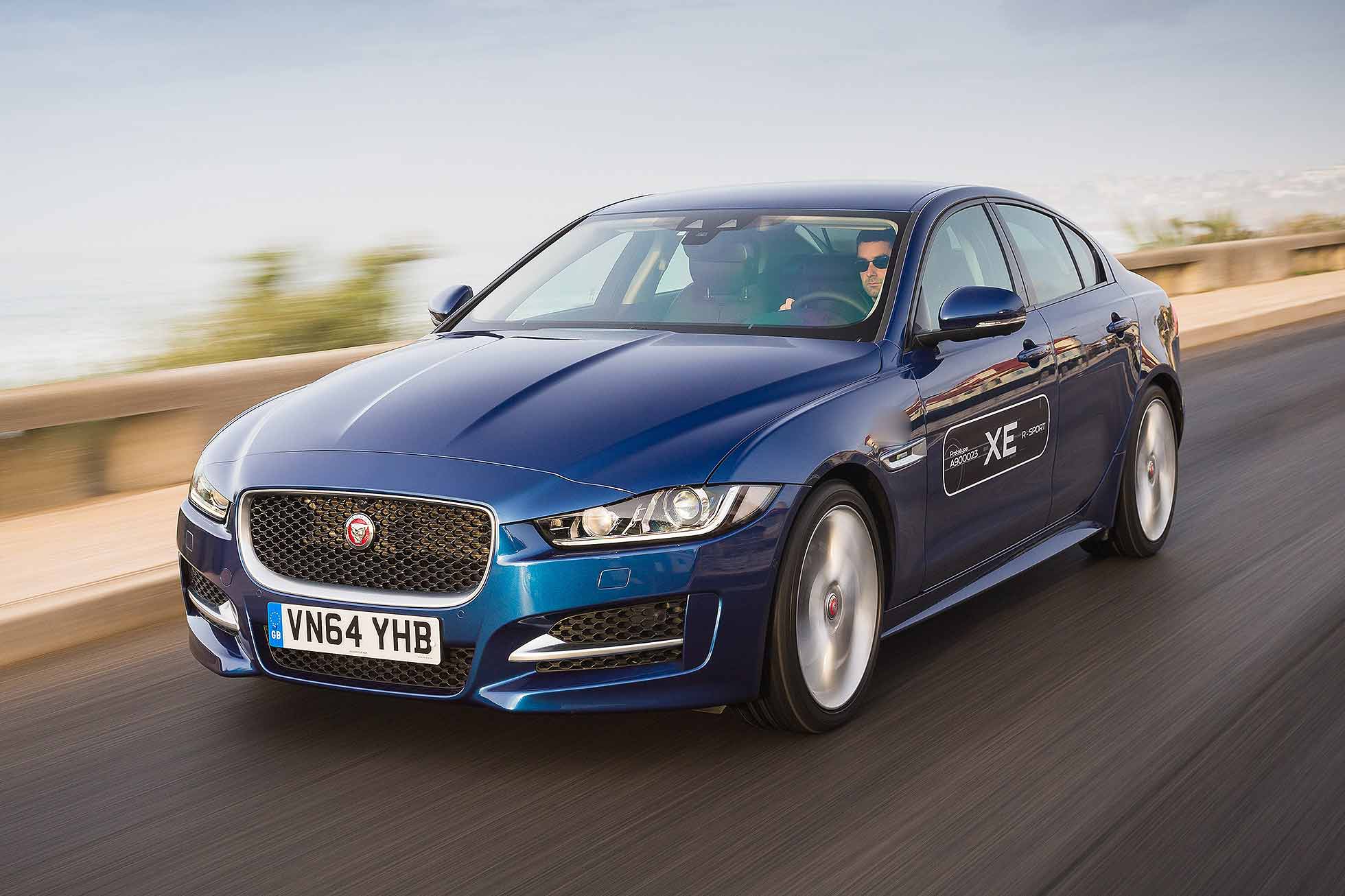
Verdict: 2015 Jaguar XE
We’re delighted to report the Jaguar XE is a contender in the ultra-competitive premium compact sector. The depth of engineering and ability are pleasingly impressive, and the way it drives is a real highlight that will provide stern competition to the BMW 3 Series benchmark.
We like how it looks, too: the styling isn’t revolutionary but does have understated elegance and pleasing proportions that, once on the road, should stand out and stand the test of time. Our two reservations are the occasionally gruff engine and the slightly plain interior. The former should easily be resolved come production, but the latter may be tricker to complete. Over to you there, Jaguar.
The overall message is positive, though. The new baby Jag is, on first evidence, set to take the fight to BMW and Mercedes-Benz in hotly-fought sector, finally giving the brand world-class clout. This is the reason why we haven’t needed to mention the XE’s predecessor, the infamous X-Type: it’s now but a distant memory…
Rivals: 2015 Jaguar XE
- BMW 3 Series
- Mercedes-Benz C-Class
- Lexus IS
- Audi A4
- Infiniti Q50
The BMW 3 Series really is at the top of its game: no car in this class has such all-round excellence. The new Mercedes-Benz C-Class runs it close though, and edges it for interior ambience. The Lexus IS is an interesting competitor that Jaguar’s taking seriously – it’s arguably more able than the worryingly aged Audi A4. Then there’s the Infiniti Q50 – although that’s a compact executive in name only.
Specifications: 2015 Jaguar XE 2.0d 180 R-Sport
Price: £34,775 (2.0d 180 automatic)
Engine: Four-cylinder turbodiesel
Gearbox: Eight-speed automatic (six-speed manual standard)
Power: 180hp
Torque: 413lb ft
0-62mph: 7.4 seconds
Top speed: 140mph
Fuel economy: 67.3mpg
CO2: 109g/km